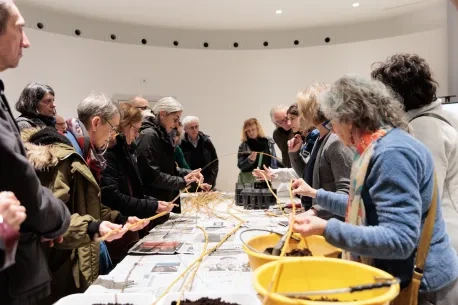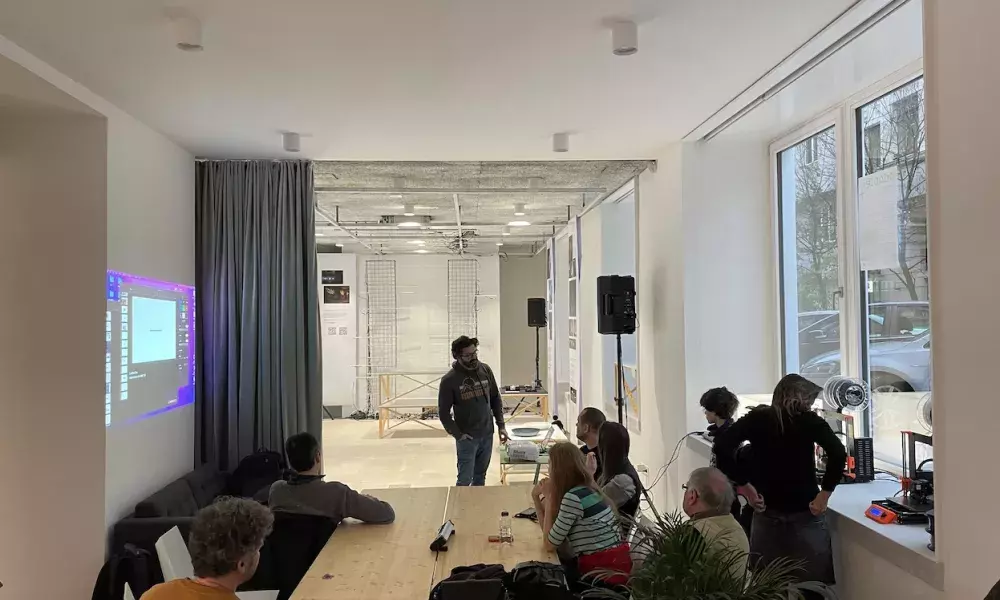
1 Executive Summary
This journal by expert Levente Polyák accompanies the UIA project CUP4Creativity in its development. This second issue serves as a summary of the project’s development in the second year, highlighting the key events, milestones and results of CUP4Creativity, and revisiting the project’s key challenges.
CUP4Creativity aims at strengthening social cohesion in the Budapest district of Újbuda, through opening new opportunities with the help of online networks and offline events. By opening a new art and technology centre, launching a new online platform and creating a new programming framework, the project builds a stronger local ecosystem that helps local initiatives share knowledge, skills and resources.
In CUP4Creativity, 2022 marked the reaching of important milestones. After a year of preparations, collaboration and process design, the second year of the project brought more tangible results, the maturing of the partnership and the consolidation of its collaboration dynamics. The renovation of the MU Theatre, the inauguration of the Adaptér, the launching of the Insert platform and the Insert programme made the project more visible, accessible and comprehensible for partners as well as beneficiaries.
For the general audience, the most visible outcomes of CUP4Creativity are the offline spaces, new cultural venues acting as hubs of the local cultural networks. While the renovation of the art ateliers managed by Eleven Blokk was delayed by procurement and contractor-related issues, a series of events in the new Adaptér, participatory theatre pieces in the MU Theatre as well as mobile outposts opened the project towards local residents and visitors.
To complement the offline spaces, the online platform Insert has been launched to connect local cultural actors with their audience as well as to help creators of various kinds build synergies and collaborations with each other. In addition, a new programming structure has been created to bring new cultural events and dynamics to the Újbuda district while also guiding users to the online platform. Besides initiating new collaborations in the area, Insert will also connect existing funding and grants to the objectives embodied by CUP4Creativity: stronger local communities, a dynamic creative sector, new cultural collaborations and circular resource management for Újbuda.
This journal concludes by recalling the key challenges in implementing the CUP4Creativity project. Despite strong political support from the Újbuda district’s vice-mayor, CUP4Creativity remains relatively isolated within the political leadership. Similarly to the project’s relative political isolation, the project continues to be disconnected from the municipality’s administrative machine. Public procurement has proven to be the most important obstacle to the smooth implementation of the project. When it comes to physical renovations, almost every public tender was marked by delays or inflated prices. Finally, the financial sustainability of the projects key offline and online spaces remains an unsolved issue and will have to be a key priority for the project’s next year.
2 Project Overview
In 2022, CUP4Creativity arrived into its realisation phase. While the first year and a half was marked by brainstorming, path-seeking and experimentation with various ways of collaborating, the project’s second year marks the maturing of the partnership and its collaboration dynamics. More importantly, in 2022, the project saw the first tangible results of the process, with the renovation of Adaptér, the inauguration of the Insert platform’s Beta version and the launch of the Insert programme. While there are still many question marks in the process, the first perceptible outcomes of CUP4Creativity gave the project not only visibility but also confidence.
2.1 Consortium and cooperation
In the project’s first year different workstreams and forms of cooperation had been tested, adjusted or, in some cases, abandoned. In the project’s second year, these workstreams have been consolidated and the consortium dynamic reached its balance. While in the early phases of the project, there were gaps in the workflows and open questions related to tasks, competences and responsibilities, these issues have been clarified by the second year and every partner found their place in the consortium.
While in the first year of the project, workstreams were built on specific working groups focusing on communication, community building, the online platform, offline spaces, monitoring or sustainability, in the second year such work took place more in the occasional, task-specific grouping of different constellations of partners.
2.2 Achievements in 2022
In 2022, CUP4Creativity arrived in a new phase. The project’s first tangible results brought a new dynamic into the consortium, with partners recognising that their efforts are invested in established new institutions, programmes and a platform. If in earlier phases, the project was more difficult to grasp, explain and communicate, the renovation of the MU Theatre, the realisation of Adaptér, the Insert platform and the Insert programme made the project more accessible to the broader public and more controllable for the partners.
The outcomes of CUP4Creativity are organised around three key project areas ranging from offline spaces, the online platform Insert and the programming framework also called Insert. The following pages explore the results of these project areas in the light of their most important achievements.
2.2.1 Offline spaces
One of the project areas with the most spectacular results in 2022 is related to “offline spaces.” In the architecture of CUP4Creativity, offline spaces play the role of physical venues that act as nodes of the local cultural ecosystem, connecting existing and new initiatives, institutions, venues and audiences. The offline spaces envisioned in CUP4Creativity are also conceived to lure people out of the post-Covid isolation through new cultural and educational programmes, building on skills of initiatives and organisations already active in Újbuda but attracting a broader public.
In 2022, several “offline spaces” have been created or upgraded. With the renovation of the municipal building hosting its activities, the MU Theatre – one of the most important theatres of the Bartók Quarter – finally resolved one of its most important infrastructural challenge, its leaking roof. The renovation process was not without any difficulties (see more details later in procurement-related challenges). The public tender received one single bid with a financial proposal 66% higher (€125,000) than envisioned (€75,000), witnessing the increase of construction costs and material prices in the wake of the Russian invasion of Ukraine. However, despite these financial challenges, the renovation has proceeded and the theatre could move back into its space in Fall 2022, celebrating with a participatory theatre piece as well as with a cultural cooperation with telecommunications giant British Telecom.
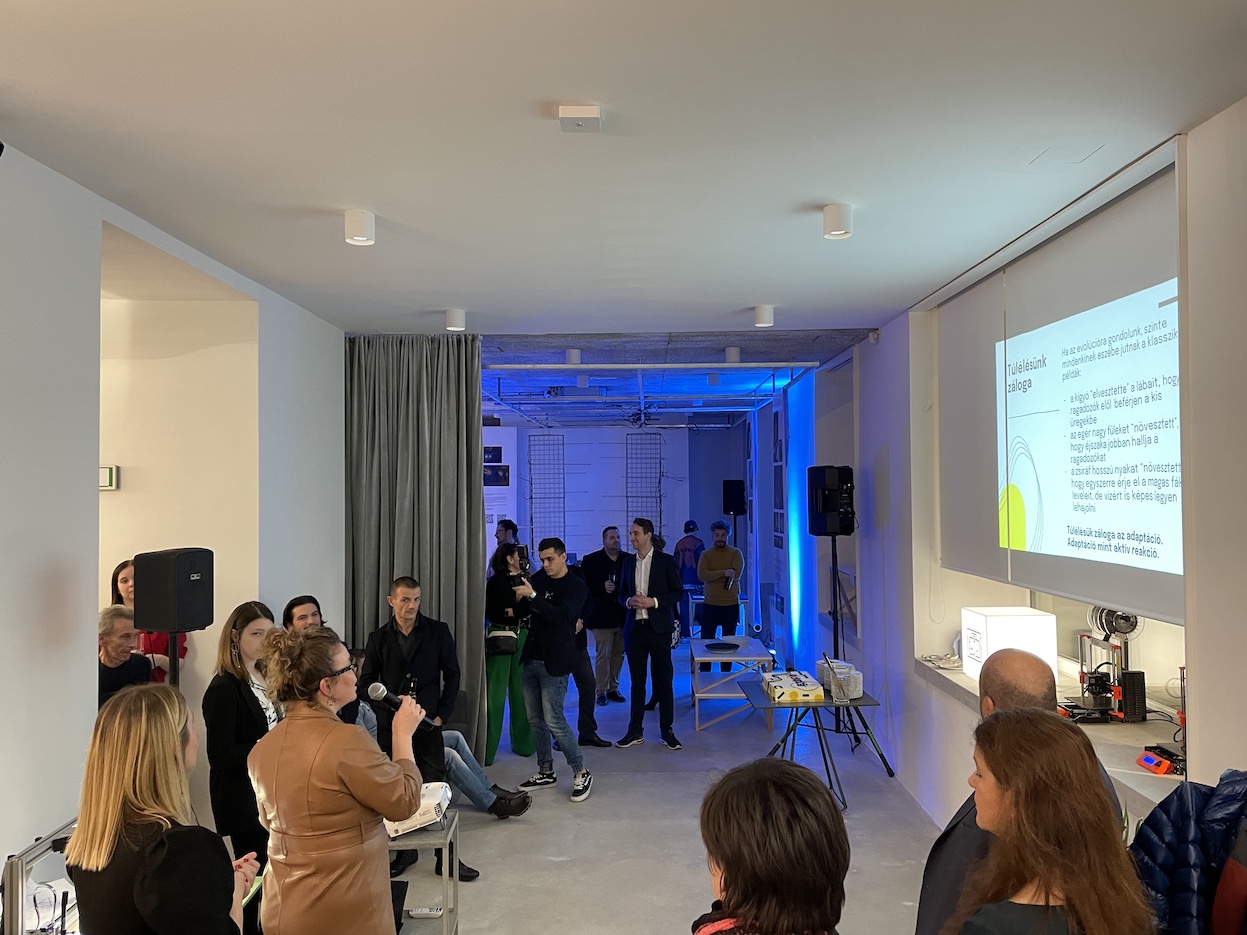

The third set of permanent offline spaces encountered more difficulties. The three art ateliers managed by Eleven Blokk faced long delays in the renovation and the process severely disrupted the organisation’s modus operandi. Initially, to make the public procurement process easier, one single tender was published to cover all three ateliers. The winner of the tender disappeared after the advance payment and did not deliver the work. It only surfaced later that the entrepreneur falsified its references and was not eligible to enter public procurement processes. While the municipality succeeded in reclaiming the properties in August 2022 without a legal process that could have potentially taken years, the renovation was still delayed by almost a year, leaving Eleven Blokk and its tenants in a limbo and with a significant financial loss. After a new tender process, the inauguration of the renovated ateliers is due in March 2023.
Besides the permanent spaces built or renovated in the framework of CUP4Creativity, a series of mobile outposts have been brought to various locations: for shorter periods, containers were installed in Bikás park, a popular green area of Újbuda, or Allee, a shopping mall located at the edge of the Bartók Quarter.
2.2.2 The Insert platform
Besides the offline spaces, a key component of CUP4Creativity is the Insert platform, an online space conceived to connect local cultural actors with their audience as well as to help creators of various kinds build synergies and collaborations with each other. After a series of postponements, the Beta version of the Insert platform was launched in September 2022. The delays were caused partly by technological challenges, partly by the unfolding of offline processes that the online platform is meant to canalise and connect.
With the soft launch of the Beta version, the Insert platform kept the possibility of optimising its user interface while building on an established user experience. In this phase, for the general public, the Insert platform might look like a simple event listing website with a well-defined geographical focus. In order to expand its use as a cultural resource management tool where spaces, equipment or instruments can be shared and exchanged, the consortium need to recruit more users and more activities on one hand, but they also must fine-tune the system’s UX and UI in order to make it more user-friendly.
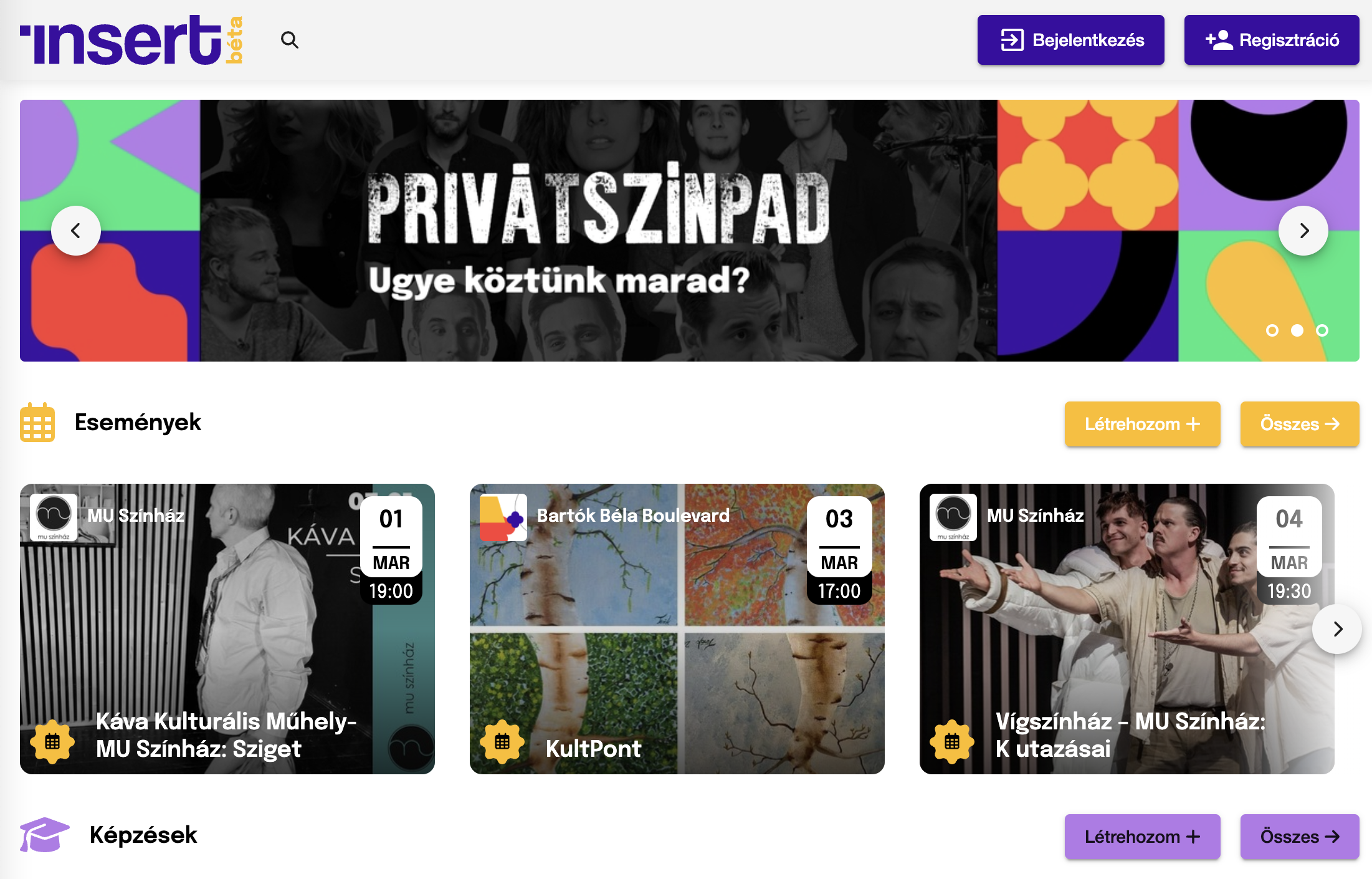
2.2.3 The Insert programme
The Insert platform is supported by a programming structure that is conceived to bring new cultural events and dynamics to the Újbuda district while also guiding users to the online platform. Besides initiating new collaborations in the area, Insert also acts as a transversal framework that connects existing funding and grants to the objectives embodied by CUP4Creativity: stronger local communities, a dynamic creative sector, new cultural collaborations and circular resource management for the green transition of Újbuda.
In the process of canalising resources towards these objectives, Insert incorporated the funding programme formerly called “Szabad a tér” (“The square is yours”) supporting local communities and resident groups in organising socialising events, small festivals, gatherings. Since late 2022, the programme continues under the “Insert” brand and focuses on street communities.
In addition to giving new focus to existing funding programmes, Insert has also been active in inventing new ways to bring together new cultural initiatives and a broader audience. The “Platán projekt” (“Plane tree project”) was conceived as a prototype for future Insert projects: based on a local resource, mobilising local skills in a collaborative effort to create an asset for local use. In the case of this specific project, recently cut plane trees were collected and reused for street furniture and installations by local art and architecture collectives. In another event series, Insert organised a set of food, wood, sustainable fashion and literature workshops led by selected “influencers,” allowing visitors to explore various fields of the creative industries from the inside.
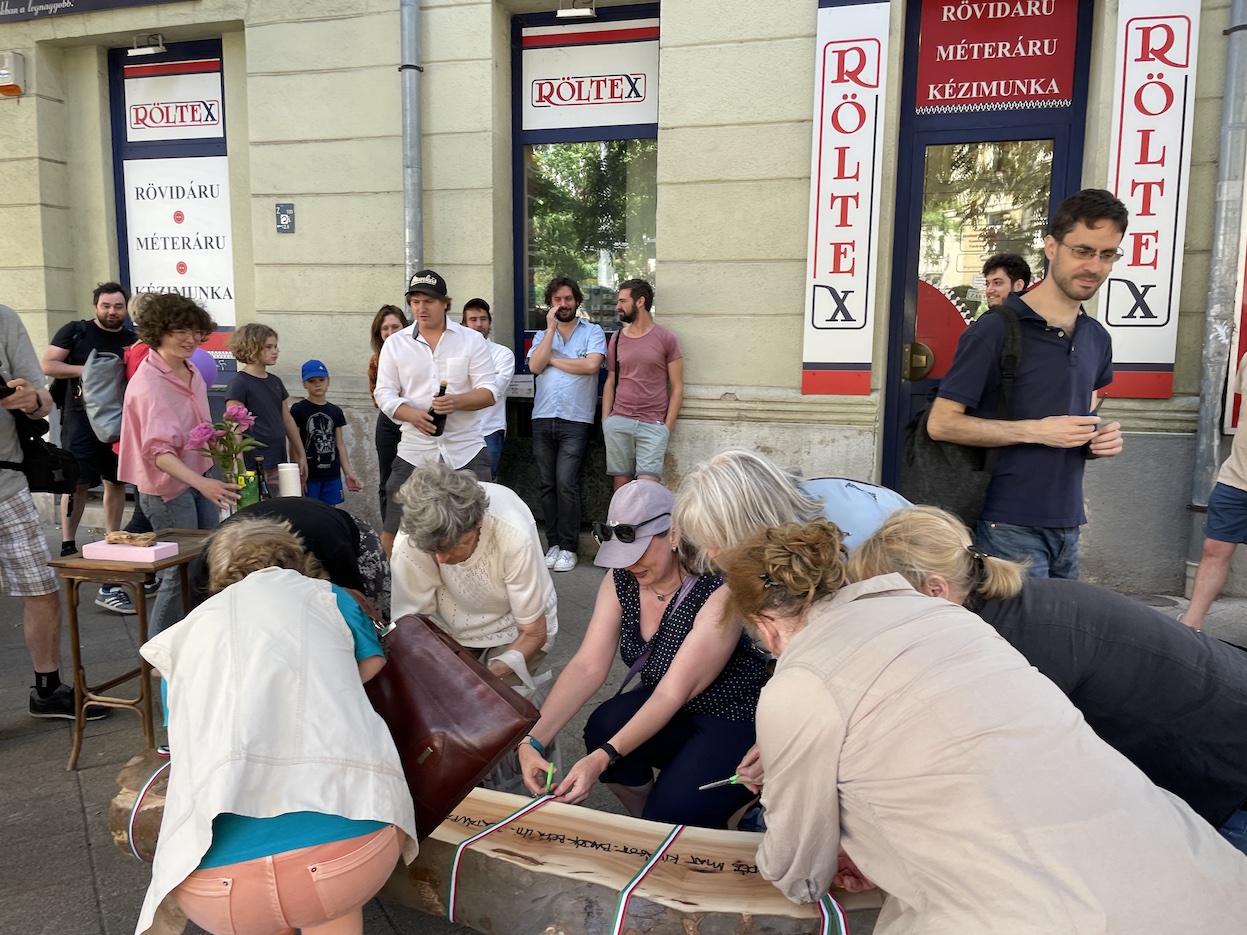
Most recently, the “Private stage” series brought concerts and theatre performances in apartments, warehouses and galleries normally not accessible to general public. “Private stage,” building on the 1980s tradition of informal cultural venues, has quickly grown into a very successful series, attracting a large number of people both to events and to the Insert platform. In a next step, Insert has launched a call to scout music talent among university students, building on the tradition of university clubs.
3 Challenges
3.1 Leadership
As foreseen in earlier stages of the project, the project continues to deal with leadership issues. Despite strong political support from district leaders, CUP4Creativity remains relatively isolated within the municipal administration. While district Deputy Mayor for Culture Richárd Barabás continues to be involved in the project both at the strategic and the operative level, there is little connection between the consortium and the various political fractions leading the municipality.
In the first year, monthly coordination meetings were arranged between various departments and the project leadership and a couple of appointments were organised with the whole political leadership. As these encounters have not resulted in more substantial engagement from the side of public officers and politicians, they were discontinued in the second year. In the meanwhile, as more and more details of the project have surfaced, some municipal officers got engaged in CUP4Creativity through their personal interests.
In the second year of the project, with the first tangible results taking shape, new opportunities have emerged to generate more involvement from both political representatives and municipal leaders. The ceremonial opening of Adaptér, for instance, represented an occasion to gather support from both political and administrative leadership: the event was attended by a deputy mayor as well as officers from various departments. There is a general sentiment in the project that with more palpable outcomes, it will be easier to engage people towards more concrete objectives.
3.2 Public procurement
Preliminary analysis of potential difficulties with procurement were optimistic: it identified political interference as a key risk to the project. However, despite careful preparations, public procurement has proven to be the most important obstacle to the smooth implementation of the project. When it comes to physical renovations, almost every public tender was marked by delays or inefficiencies. The tender for the renovation of MU Színház received one single proposal with the financial offer 66% higher than envisioned. The renovation of the ateliers managed by Eleven Blokk was severely delayed by a fraudulent construction entrepreneur who was not able to deliver the works agreed upon. In the case of the Adaptér, the municipality had to repeat the public procurement process as offers in the first round did not match the project budget. While the second round of the tender and the renovation of Adaptér has been a relatively smooth process, the administrative offices of the municipality had to reinvent their ways of working with contractors, learning to treat them as partners. Furthermore, the procurement process to purchase equipment for the future art and technology centre have proven to be more complicated than planned: while the delivery of certain instruments is delayed by the global chip shortage, acquiring digital tools is confused by dilemmas if a specific object is qualified as an art piece or a single artifact.
In summary, current procurement rules are seen as inappropriate for the needs of CUP4Creativity. On one hand, the lengthy, bureaucratic and inflexible procedures are unsuitable for the needs of innovation that requires flexibility in testing and adjusting processes. On the other hand, with the disintegration of global supply chains due to the pandemic, the increase in material prices and construction costs caused by the war, as well as the lack of municipal competence in filtering out fraudulent participants makes procurement processes unpredictable and often prolonged to an extent that is disruptive for the whole of the project.
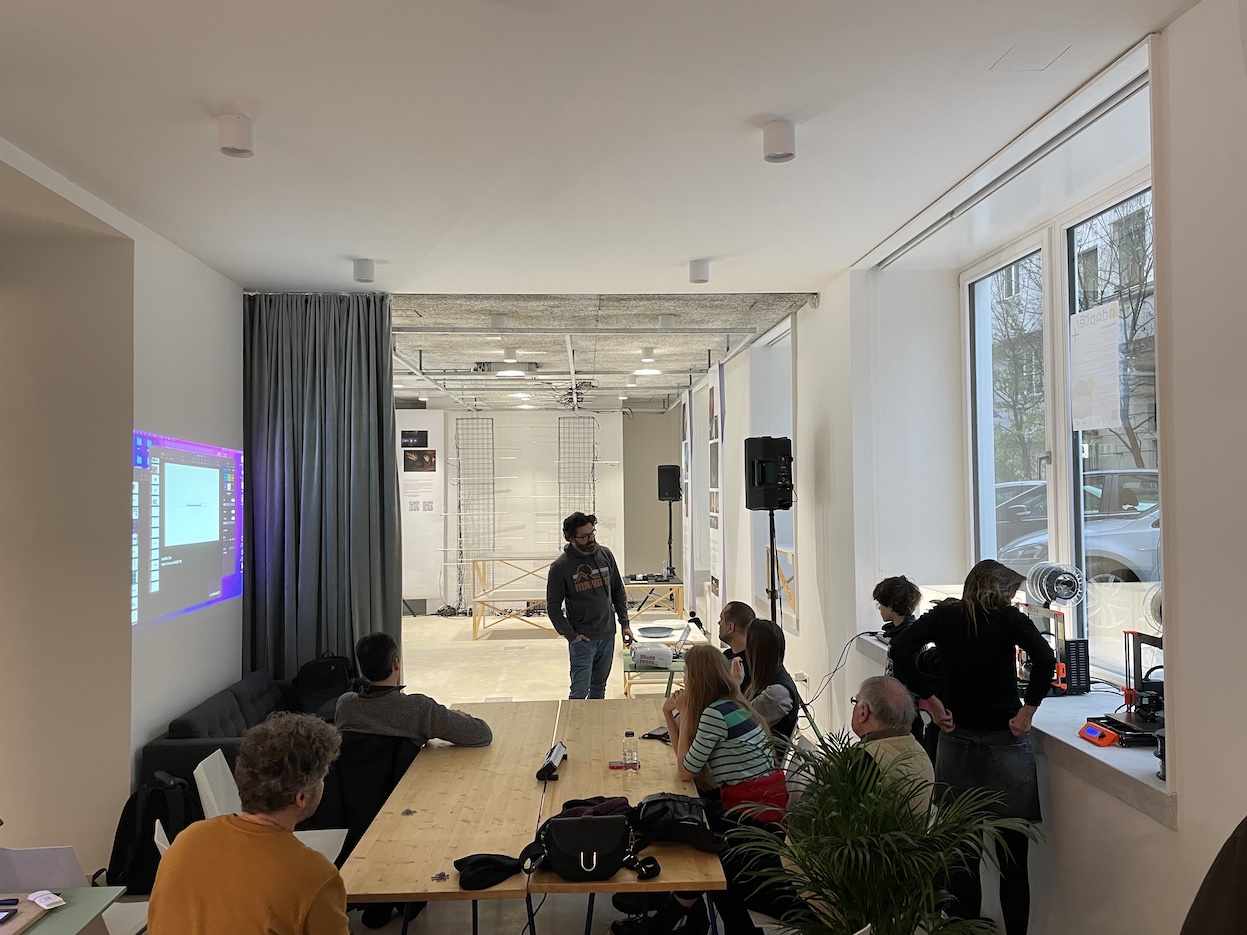
3.3 Participative approach
The participative approach of the project is maintained by its broad partnership. After the first year of experimenting with different ways of cooperation between partners, the modalities of participation became more clear. With the consolidation of project management and workstreams connecting different tasks undertaken by different partners, each partner found their place in the project.
Besides the project partners, engaged in different phases and areas of the project, a series of subcontracted partners are also involved in the project. These partners, such as VALYO (an organisation responsible for community building activities around the Adaptér) and the Let it be! Art agency (responsible for programming the Adaptér), have played an increasingly important role in the consortium. In the second year, these organisations have progressively became key actors of CUP4Creativity.
Engagement and participation is not a linear process though: the intensity of the different partners’ participation in the project changes with the different tasks they need to undertake. While some organisations with a key role in the first year have withdrawn to a more restricted role in the second year, others’ contribution has grown in the latest project period.
3.4 Cross-department and integrated management and implementation
Similarly to the project’s fragmented engagement within the municipality’s political leadership, CUP4Creativity remains also relatively disconnected from the municipality’s administrative machine. The challenge of involving more departments and municipal officers in the project is related to the difficulty of translating some of the concepts of CUP4Creativity to the municipality’s administrative logic. While the project fosters experimentation and speaks the EU’s language of innovation, these notions are rather unfamiliar for municipal departments and many elements of the project are difficult to define for the officers.
While the main work areas of CUP4Creativity tended to unfold in parallel to each other in the project’s first year, they began communicating and developing links in the second year. The IT platform, launched in its Beta version, is now better connected to the Adaptér as well as to the Insert programme, featuring their events and potentially connecting local actors in the framework of these events. Some of the planned synergies between partners have also begun to unfold in the project’s second year: the MU Theatre, for instance, has developed a series of cultural services with British Telecom, another partner.
The different levels of inter-connectedness of partners in CUP4Creativity reflects different roles in the project: while regular partners may exchange information via working groups and specific channels established by the central project management, others with more flexible roles (often in a subcontracted position) are more connected to a great diversity of partners and coordinate them with a more precise focus, with specific events in sight.
3.5 Monitoring, evaluation and measurement
Monitoring, evaluation and measurement have been conducted by a specific working group, led by KÉK and bringing together various partners. After identifying a series of datasets and indicators to use for the monitoring of the project’s impact, these monitoring tasks have been decentralised and integrated in a variety of tasks, overseen by different partners. This arrangement will assure that monitoring, evaluation and measurement are well-integrated in the project and are not tasks external to the activities.
3.6 Communication with local partners and beneficiaries
In the second year of the project, CUP4Creativity has pronouncedly increased its outreach. A series of events in the Adaptér, in the mobile outposts, in MU Theatre and as part of larger district festivals brought many residents in acquaintance with the project’s different elements. Furthermore, the latest events of the Insert programme, including workshops with influencers and private stage concerts, have gained more visibility for the project.
As CUP4Creativity reaches its first important milestones and tangible results, it is easier and easier to communicate the project to its future beneficiaries and the broader community. The fact that Adaptér is a physical venue that has opened for a series of events, or that the Beta version of the Insert platform is up and running makes the entire project more palpable for the public and even for local partners.
The procedures behind communication, however, are not simple. There are many bureaucratic barriers between the municipality’s administrative machine and contemporary means of communication. If the municipality wants to place advertisements on social media channels, for instance, it can organise communication in-house or outsourced to a contractor, leading to a more bureaucratic or a more expensive and more fragmented option.
The complexity of communication is also magnified by the two parallelly existing marketing budgets the project disposes of: the communication of the Adaptér is managed by Központ Kft., the district’s cultural service provider company, while communicating the events and results of the Insert platform and programme belong to Smart 11, the municipality’s IT company and also a consortium partner in CUP4Creativity.
3.7 Scaling up
While elaborating the possibilities of scaling up the project’s innovative solutions is a main requirement of CUP4Creativity, it is not a major preoccupation for partners at the moment. Nevertheless, opportunities for a more expanded use of the Insert platform have emerged throughout the project’s second year. While the apparition of the Budapest Municipality’s Budapest Tuning programme was first seen by CUP4Creativity partners as a competitor, it later turned out to be a potential partner in upscaling and multiplying the Insert platform. In turn, the Insert programme also borrowed a few methods from Budapest Tuning, especially its process of mentoring and refining proposals.
3.7 Other challenges – Sustainability
The financial sustainability of CUP4Creativity remains one of the key challenges of the project. While the exact operational costs of the Adaptér will only be defined when the venue will be in full use, the Insert platform will cost about 150,000€ a year. While these new cultural assets need to generate some revenue to support their maintenance, they cannot be fully self-sustainable. Exploring different potential revenue streams, the consortium is engaged in developing a business model for both the platform and the venue. Needless to say, the energy and supply chain crises have brought additional challenges to CUP4Creativity, in form of running costs, for instance, or the purchase costs of technical equipment, thus putting the project’s financial sustainability at risk.
4 Conclusions
The second year of CUP4Creativity was marked by the realisation of tangible results: 2022 saw the inauguration of Adaptér, a new cultural venue offering technology-related art and educational programming, as well as the launching of Insert, an online platform designed to facilitate collaborations and help initiatives share knowledge, skills and resources.
The project’s third year will be decisive for the success of CUP4Creativity. In 2023, the consortium will need to give sense to Újbuda’s new venues, online platform and programming framework. Adaptér, a few months after its inauguration, will be equipped with a variety of technological instruments and will starts its regular operation. In this phase, it is crucial that the new venue finds its way into the mental maps of Újbuda residents and develops a role in the local cultural ecosystem.
The Insert platform, launched in its Beta version, needs to convince users about its potentials: going beyond a simple event listing page, it needs to bring additional users and offers to begin operating as a cultural resource management platform.
2023 will also be the year when some of the achievements of the project need to be consolidated and safeguarded for the future: the project’s third year has to focus on designing business models around the new venues and online spaces of CUP4Creativity in order to make them financially sustainable in the long term.
About this resource
The Urban Innovative Actions (UIA) is a European Union initiative that provided funding to urban areas across Europe to test new and unproven solutions to urban challenges. The initiative had a total ERDF budget of €372 million for 2014-2020.
Similar content
